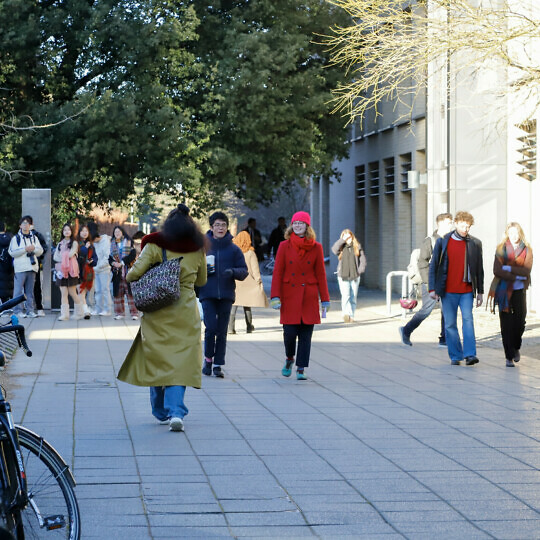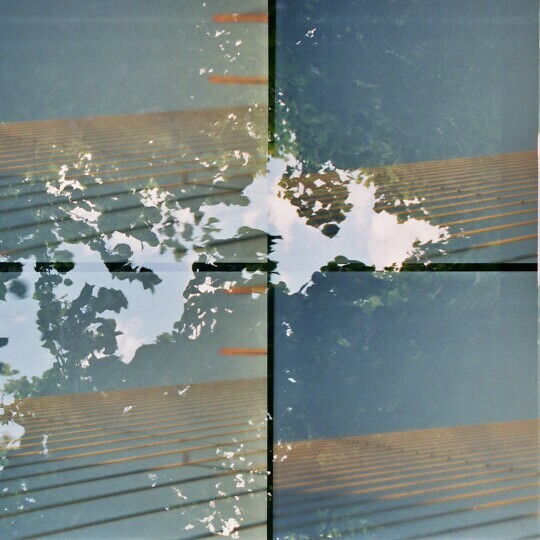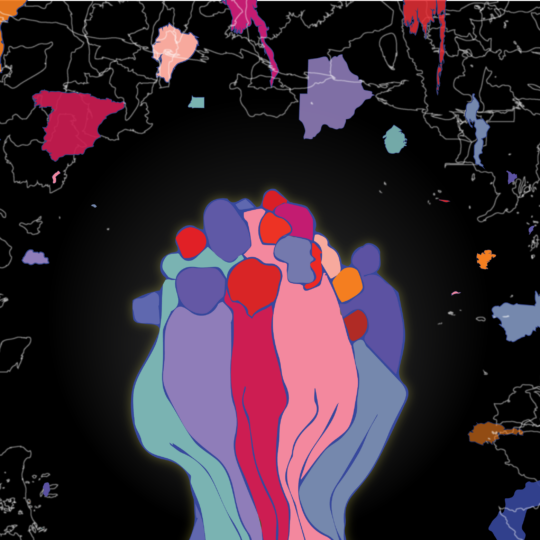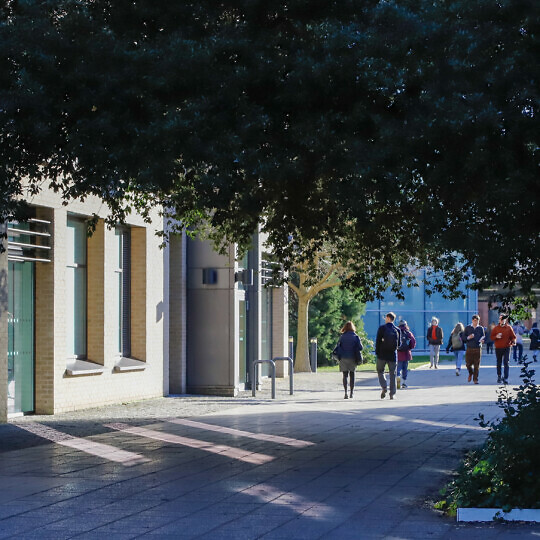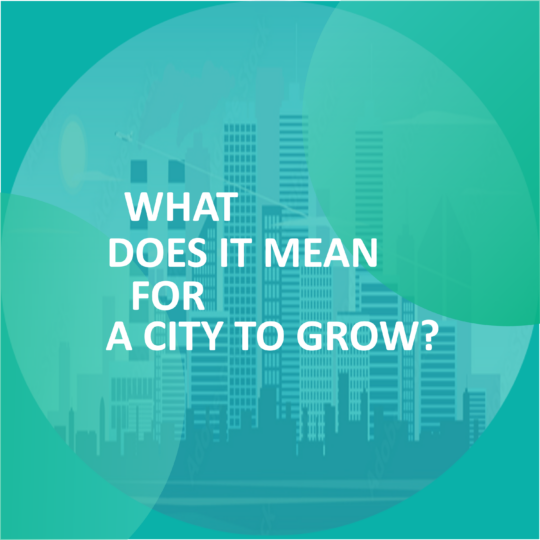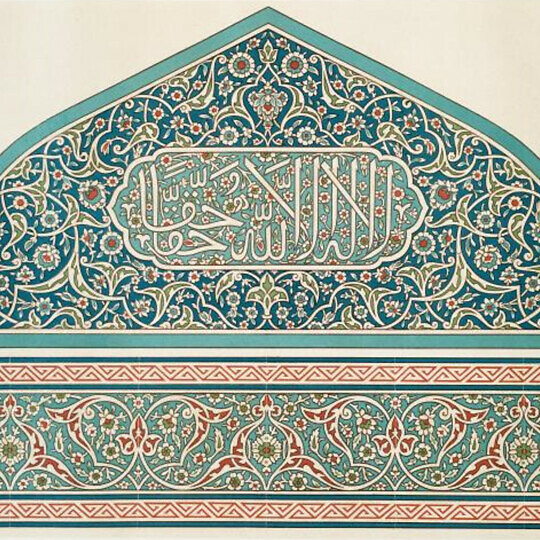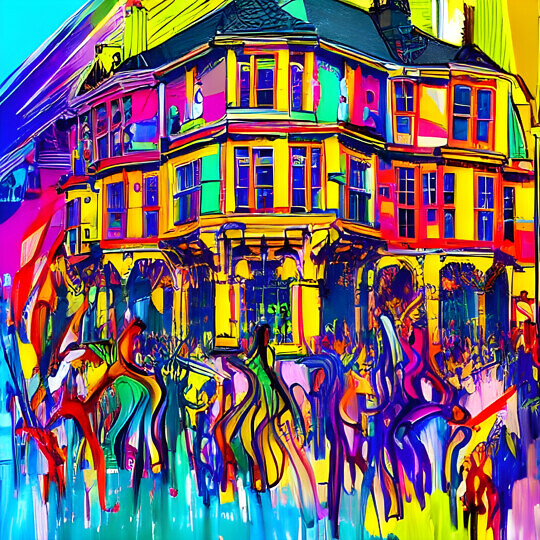| 5 Dec 2014 - 6 Dec 2014 | All day | CRASSH, Alison Richard Building, 7 West Road, CB3 9DT | |
- Description
- Programme
- Abstracts
Description
Conference fee: £25 (full), £15 (students) – includes lunch and tea/coffee
Deadline for Registration: 1 December 2014
Convenors
Dr des. Lukas Engelmann, CRASSH
Professor John Henderson, Wolfson College/ Birkbeck, University of London
Dr Christos Lynteris, CRASSH
Administrative assistance: plague@crassh.cam.ac.uk
Summary
Perhaps more than any other disease, bubonic plague has been historically and epidemiologically entangled with the urban environment. Still, even after its genetic identification, its mode of transmission and persistence in the city, its evolving forms remains subject to debate across the humanities and the life sciences. More often than not, understandings of this interrelation are informed by Medieval and Early Modern plague narratives and by colonial representations of urban and housing forms in the course of the Third Plague Pandemic. This conference aims to bring together social scientists, historians, historical geographers, urbanists and epidemiologists to discuss and disentangle the interrelation between bubonic plague (Yersinia pestis) and the urban environment in both historical and contemporary contexts.
Key issues addressed during the conference consist of the following:
- Urban and housing forms as catalysts in the transmission and persistence of plague; the problematisation of urban and housing forms as miasmatic or bacteriological sources of plague; plague-prone urban and housing forms in terms of materials, design and crowding; notions and images of plague-prone and plague-resistant urban and housing forms; colonial and postcolonial narratives and images of plague-enabling forms of habitation.
- Practices and representations of anti-plague urban measures and policies, (e.g. quarantine, redesign, torching, demolition); the relation of anti-plague urban measures and policies to notions and images of contagion, pollution and contamination in the city; dynamics and tensions of urban and housing reforms aimed at plague containment and prevention in pre-colonial, colonial and postcolonial contexts.
- Mapping plague in the urban environment; urban planning visualisation methods and its impact on plague-mapping; uses of urban plague-mapping in historical epidemiology.
This is the first annual conference of the Visual Representations of the Third Plague Pandemic project and will reflect, but not be limited to, the Project's focus on visual medical humanities as well as its overall interdisciplinary perspective.
Sponsors
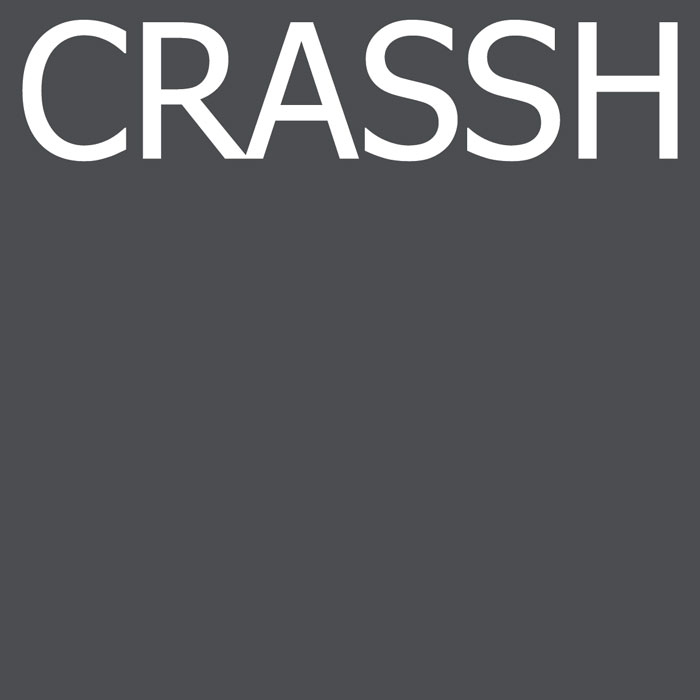
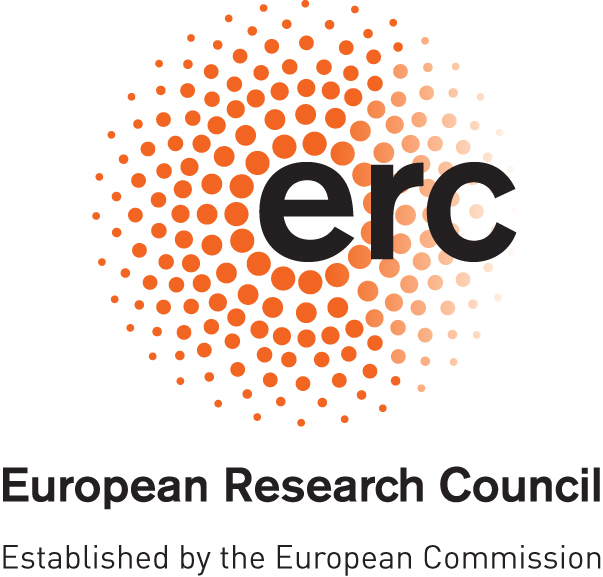
Supported by the Centre for Research in the Arts, Humanities and Social Sciences (CRASSH) at the University of Cambridge and by the European Research Council under the European Union’s Seventh Framework Programme (FP7/2007-2013)/ ERC grant agreement no 336564
Accommodation for non-paper giving delegates
We are unable to arrange accommodation, however, the following websites may be of help:
Visit Cambridge
Cambridge Rooms
University of Cambridge accommodation webpage
NB: CRASSH is not able to help with the booking
For administrative assistance: please contact the Plague Team office.
Programme
| Friday 5 December | |
| 08.45 - 09.00 | Registration |
| 09.00 - 09.15 | Welcome and opening |
| 9.15 - 11.00 | Panel 1 – Housing Plague
Discussant: Justin Champion (Royal Holloway, University of London) Chair: Nicholas Evans (University of Cambridge) |
| 11.00 - 11.30 | Coffee |
| 11.30 - 13:00 | Keynote 1 Marta Hanson (Johns Hopkins University) Visualising Plague in East Asia, 1870s-1910s Respondant: Andrea Janku (SOAS, University of London) |
| 13.00 - 14.30 | Lunch |
| 14.30 - 17.00 | Panel 2 – Mapping Plague
Discussant: Carlo Caduff (King’s College, University of London) Chair: Branwyn Poleykett (Cambridge) |
| 17.00 - 17.30 | Coffee |
| Saturday 6 December | |
| 09.15 - 11.00 | Panel 3 – Urban Crisis
Discussant: Annamaria Motrescu-Mayes (University of Cambridge) Chair: Lukas Engelmann (University of Cambridge) |
| 11.00 - 11.15 | Coffee |
| 11.15 - 13.00 | Keynote 2 Robert Peckham (University of Hong Kong) Plagued in Hong Kong: Disease in the Age of Mechanical Reproduction Respondent: Romola Davenport (University of Cambridge) |
| 13.00 - 14.30 | Lunch |
| 14.30 - 16.15 | Panel 4 – Urban Environment
Discussant: Jeremy Boulton (Newcastle University) |
| 16.15 - 16.30 | Coffee |
| 16.30 - 17.15 | Final comments and Discussion Samuel Cohn (University of Glasgow) Chair: Christos Lynteris (University of Cambridge) |
| 17.15 | Closing drinks reception |
Abstracts
Alphabetical by speaker
The Plague in Oporto, 1899: Sanitary Measures and the Dispute with Lisbon
Maria Antonia Almeida, Instituto Universitário de Lisboa
How did countries respond to epidemic surges? What were the official health procedures to avoid disaster? Using newspapers as the main source of information, my purpose was to establish how the latest scientific news at the time were divulged to unspecialised audiences, what were the main interests and themes and how they were transmitted.
With the bubonic plague surge in Oporto in 1899, as in earlier sanitary crisis, such as the cholera morbus epidemic in 1854-56, news and reports of its evolution occupied most of the pages of the daily press. A database of news and advertisements was built in order to analyse the type of information and advice given to the public and the sanitation measures taken by the authorities. Hygiene was a main issue of concern. The reactions of the people to the introduction of sanitation, to quarantine and to all related constrains of an epidemic are fundamental to understand the mentality of the different classes. All these subjects reflect a major issue which was present throughout the nineteenth century in Portugal: the reinforcement of central government and the power dispute between Oporto, an industrial and commercial city, and Lisbon, the capital. This research also contributes to assert the place that Portugal occupied in the scientific community in the last two centuries. The biographies and published work of the doctors in charge, Ricardo Jorge and Câmara Pestana, show us that Portuguese doctors and scientists were up to date with scientific and technological developments. There was circulation of knowledge, even if sometimes it was not properly applied, particularly in rural areas, far from the main cities: Lisbon, Oporto and Coimbra.
Bubonic plague, colonial ideologies and urban planning policies: Dakar, Lagos and Kumasi in comparative view (1910s, 1920s)
Liora Bigon, The Institute of Western Cultures, The Hebrew University of Jerusalem,
With the establishment of European colonialism in sub-Saharan Africa by WWI, all colonial governments sought to ameliorate the transportation networks that were essential for administrative and economic control over the newly acquired territories. Clearly enough, the intensification of terrestrial and maritime intercommunication also intensified the spread of disease. A close examination into colonial urban practices during several outbreaks of bubonic plague epidemics that hit the West African coast in the early twentieth century demonstrates the key role played by colonial ideologies and politics in confronting the plague. Each locus of infection – French Dakar (Senegal), and British Lagos (Nigeria) and Kumasi (the Gold Coast, today's Ghana) – serves a mirror to understand the interconnectedness between doctrines of colonial rule and actual anti-plague measures. These include the interconnectedness between the philosophies of assimilation, and direct and indirect rule; international and transnational processes, events and dissemination of (pseudo-) scientific knowledge; and the level of top-down interference with daily modes of lives, resulting in actual and potential confrontations with the autochthonous groups.
Research on colonial politics of disease in sub-Saharan Africa is abundant, mostly in the form of a series of in-depth case studies analysing the culturally-grounded socio-politics of disease under the umbrella of a particular colonial power; or in the form of edited collections with each contribution treats the disease factor under certain colonial power or situation. However, studies that directly compare colonial urban planning of two or more colonial powers in sub-Saharan Africa are still rather scant, including those that deal with the relation between colonial ideologies and anti-plague measures via the route of urban planning. Employing a rich variety of primary and secondary sources, the paper will exemplify that town planning during plague (and other infectious diseases outbreaks) was instrumental to colonial governments in sub-Saharan Africa and acknowledged as the only effective method in confronting disease. Yet, it will be shown that regional variations in its application in times of crisis not only reflected colonial ideologies and imageries. These variations also testified to the fragility of the colonial power, raising the question whether, in the words of Jennifer Robinson, was it “a perfect system of control?”
Mapping Plague in London, 1560-1665
Neil Cummins, LSE
We combine individual records of 930,000 burials across 112 London parishes with shapefiles taken from Southall and Burton, GIS of the Ancient Parishes of England and Wales, to map plague outbreaks from1560-1665. Tracking the weekly spread of plague we find no evidence that plague emerged first in the docks, and in many cases elevated mortality emerges first in the poor northern suburbs. Plague was endemic and not an exotic import. We also use the returns of the 1582 Lay Subsidy to map the social geography of the city. We show that the central parishes tend to be rich and the peripheral ones poor with the spatial distribution of wealth more diffuse in 1582 than in 1638.
Photographic mappings of the Third Plague Pandemic in the USA
Lukas Engelmann, CRASSH
The Bubonic Plague arrived in the United States in 1899 via Honolulu, reached San Francisco in 1900 and returned with a major outbreak to Los Angeles in 1924. All three of these events have led to a trail of public health interventions and sanitary measures often fuelled by politics of exclusion and an on-going endemic plague in rodents until today. All three outbreaks were recorded in extensive photographic series leaving a visual archive of the plague in the USA, that hasn’t been subject to historical research. My paper will demonstrate that these pictures should be approached as a technique of mapping, rather resembling the practice of photogrammetry and forensic instead of clinical or medical photography. Thus the photographic series will be assessed and discussed against the backdrop of traditional mapping techniques, used to answer epidemiological questions of origin, distribution and responsibility (Koch 2011) or in relation to the racial mapping of Chinatown e.g. in San Francisco (Shah 2001).
In the photographs, Bubonic Plague is presented in a series of documentary pictures that seemingly were produced to capture various stages of the specific urban configuration which led to the outbreaks. The extensive albums captured hundreds of buildings either in their original state, or after they were cleaned and sanitized or destroyed. Furthermore, both series covering the first outbreaks in Honolulu and San Francisco have been produced within the on-going and heated debates on the nature of the plague. Here, miasmatic theories and ecological disease models clash with the rapidly emerging field of bacteriology and the unpopular role of federal bacteriologists. The series of photographs covering the spatial conditions of the outbreaks clearly contribute to these debates, and will be interrogated on their specific contribution to the Plague aetiology. Thus, the overall question will be raised if these series can be understood as a specific photographic genre which might be called epidemiological photography.
Plague unbound in Bombay
Nicholas Evans, CRASSH
This paper focuses upon a specific example – that of an outbreak of plague in the fishing village of Worli in Bombay in 1896/7 – to examine how colonial health officials understood plague as a 'total' disease of the city. I examine a plague map of the village in which the city is presented as a seemingly smooth surface across which the disease is generated and moved. Specific flows of transmission or barriers are effaced; plague is presented as a problem of the total relationship between disease and urban surface. Building upon this idea, I suggest that 1) plague was, for doctors, uniquely difficult to think with in its first ten years in India, and 2) that this lead to rather unusual proposals for eradicating plague, the example given being that of a floating city dreamed up by Bombay's Executive Health Officer.
Maps of Plague in East Asia as Analytical Tools and Technologies of Power, 1878-1921
Marta Hanson, Johns Hopkins University
In 1878, Dr. Patrick Manson published a map of the plague epidemics in Yunnan that occurred several years earlier from 1871 to 1873 in the “Medical Reports” section of the Imperial Maritime Customs Bureau Gazette. The French Consulate in Yunnan, Émile B. Rocher, published a color-coded enlarged version of the same Manson map in his 1879 La Province Chinoise de Yünnan. Nearly two decades later in 1898, Jean-Jacques Matignon of the Pasteur Institute published two maps of a Manchurian plague epidemic in 1896-7 in the same “Medical Reports” of Manson’s first 1878 plague map. In these three earliest maps of plague in China, cities appear only as points through which the epidemic has spread. Just two years later, however, Kitasato Shibasaburo published two maps of the plague epidemic in Japan from November 1899-January 1900 in which not only the cities Osaka and Kobe came into focus but also where specific plague deaths in each city occurred. These maps both reveal the high level of Japanese control of the epidemic and legitimate the Meiji government’s new German-based medical education system (since 1875) that made such control possible.
Maps of the earlier 1894 plague epidemic in Hong Kong, where Kitasato and Alexandre Yersin independently claimed discovery of the plague bacillus, however, were not published until 1903. In these four maps not just Hong Kong but specific sections of the British colony were drawn; and not just cases of human but also of rat plague were located at the level of streets and houses. These maps functioned both as analytical tools to work out the epidemiology between human and sylvatic plague and as technologies of power that legitimated British rule over the local population. Plague returned to Manchuria in the winter of 1910 and before it ended by March 1911, physicians from Russia, Germany, Japan, the US as well as China arrived to control and study it. Maps were quickly published within the next year in Russian, German, Japanese, and English publications but only the Russian and Japanese examples focused on specific cities: the Russians on Harbin, which was essentially a Russian colony, and the Japanese on other cities in which they had a comparable presence because of their control of the South (i.e., Japanese) Manchurian railway. Their maps, like the British ones of the 1894 plague epidemic in Hong Kong, visualized their medical infrastructure as much as plague incidence.
When plague returned to Manchuria in 1921, Dr. Wu Lien-teh, Director of the Chinese government’s Manchurian Plague Prevention Bureau (established following the 1910-11 epidemic), published three important plague maps, none of which focused on a single city: a “Map of Plague Region, Manchuria, 1921” (which included for the first time Chinese characters as well as English for the place names and cities), a “Map of North Eastern Asia showing iportant Plague Centres” (i.e., sylvatic plague reservoirs in Manchuria), and a “Map to illustrate endemic plague areas” in the world (also of sylvatic plague reservoirs). These maps positioned China as a research centre and laboratory for both human and sylvatic plague for a global audience. During the same plague epidemic, Wu Lien-teh also published “Propoganda Posters” on bubonic and pneumonic plague written in vernacular Chinese for the local population. People turned out to be even more difficult to control than microorganisms. By beginning these posters with maps of bubonic and pneumonic plague in the world and in China, followed by illustrations of the causative bacilli in petri-dishes, he attempted to convince a wary public of an entirely novel way of seeing epidemic disease, themselves, and their place in a newly globalizing world.
From the first Manson map of the 1871-3 plague epidemic in Yunnan to Wu Lien-teh's wide-range of maps during the 1921 Manchurian plague epidemic, maps changed functions from analytical tools to work out causal relationships to technologies of power to legitimate state-populace relations. The specific relationship of “the plague to the city” that is the subject of this conference appeared only in the maps of plague in British Hong Kong (1894), Imperial Japan (1898-9), Russian Harbin (1910-11), and Japanese areas of Manchuria (1910-11) in which state power translated into the medical infrastructure that made both the house-to-house mapping of plague deaths newly possible and the extent of colonial/imperial power newly visible.
Plague in early modern London: chronologies, localities, and environments
Vanessa Harding, Birkbeck, University of London
Plague in early modern London has been the focus of many studies, but there still remain inconsistencies and puzzling elements in an apparently widely-accepted narrative. London experienced at least six epidemics of plague, but their severity varied from episode to episode and from area to area. Although the quality and healthfulness of London’s built environment almost certainly deteriorated over the period, plagues did not get successively worse in relation to population size. As Paul Slack showed in 1985, the topographical focus of plague shifted markedly from the mid-sixteenth to the seventeenth century, from the old centre to the newer suburbs. More recently, Justin Champion found an inconsistent correlation between poverty, endemic mortality, and epidemic mortality in his study of the plague of 1665. Furthermore, while plague often disappeared after a single terrible epidemic year, on two or three occasions it lingered for several years, killing a significant number over several consecutive years but never flaring into a citywide epidemic.
Arguably, therefore, to resolve these puzzles, we should turn from the great plague years to focus on the continuum and the fine detail of local and chronological variation, if we can. A combination of family reconstitution and topographical reconstruction may offer some useful insights, as may a better understanding of the structures and materials of London housing. Study of plague in London should also take account of the other epidemic diseases to affect the metropolis – sweat, influenza, fevers, smallpox – and how they interacted or replaced one another. Absence or sparsity of evidence limits enquiry in some directions, but as this paper will argue there are still sources to be (re)investigated and insights to be recovered.
‘Filth is the mother of corruption’. Plague and the Built Environment in Early Modern Florence
John Henderson, Department of History, Classics and Archaeology, Birkbeck, University of London, and Wolfson College, University of Cambridge
The aim of this paper is to explore the association between the impact of plague and the physical fabric of the city during the last major epidemic to affect Tuscany, 1630-1. Contemporaries in the seventeenth century were only too aware of the close connection between disease and the conditions in which people lived. This was reflected in the long tradition of sanitary legislation, which sought to address what they thought caused disease, namely corrupt air, which was seen as being generated by industrial and domestic waste and exacerbated by people living in cramped, crowded conditions.
The threat of plague led early modern city states to implement both precautionary measures to address the factors which led to the generation of disease, and to preventive measures when an epidemic had broken out in a city. This led to the institution of a complex system directed by Health Boards first to mitigate the spread of disease including house-by-house sanitary surveys, the cleansing of streets and houses, the inspection and registration of the sick and their incarceration in isolation hospitals and the quarantining of their contacts and families in their houses or villas and monasteries in the hills around Florence. All this activity was based on the belief of the causal link between disease, the physical environment and living conditions, especially of the poorer members of society, who were even blamed for the worsening epidemic through their lifestyle. Based on surviving surveys and censuses of the population, this paper will allow us to examine the spread of plague within the city to assess how far contemporary concerns about the causal links between poverty, housing, environmental conditions and disease were indeed justified.
Early Modern Form of Disease Surveillance and Mapping the Plague: Prague and Other Bohemian Towns in 1680
Mgr. Pavla Jirkov,CERGE-EI
The purpose of this paper is to provide an overview of disease surveillance system functioning adherent to the urban environment of Early Modern Bohemia during the plague in 1680. In accordance with instructions of the state and church institutions, administrators of regions, towns, domains or parishes recorded not just the total number of plague deaths, but partially also the structure of the deceased population. Plague registers frequently mentioned the names of the deceased people as well as their demographic profile, for instance: gender, approximate age, symptoms and length of illness, marital status and social strata. The reports on numbers of dead were prepared as tables or structured lists.
The paper will contain visual depictions of contagion dynamics and its spread through individual regions and towns of Bohemia. Areas of the maximum number of deaths on plague were situated unequivocally in the Central Bohemia, that means the capital city of Prague and surrounding regions. Moreover, the distribution map showing the plague cases occurred in Prague will be available. The number of plague victims given by the councillors of all the separate Prague towns reached in total more than 12,000 people. Prague, a refuge for Leopold I, Holy Roman Emperor fleeing from Vienna because of plague, thus itself became the focus of the epidemic.
The infection rules issued in Vienna in 1679 became the basis for creating a Czech and Silesian equivalents in 1680. According to these infection rules, other anti-plague urban policies were established (e.g. quarantine, health passports, etc.).
This paper gives partial results for the five-year grant project Restrictive Plague Policies and the Prevention of Demographic and Economic Crisis in the Early Modern Czech Lands (funded by the Czech Science Foundation, Registration No. 13-35304S). This grant project is designed at the Economics Institute of the Academy of Sciences of the Czech Republic (the joint workplace CERGE-EI).
A ‘Suitable Soil’: Visualising plague’s environment during the third pandemic
Christos Lynteris, CRASSH
A pressing question during the first years of the third plague pandemic was what was a “suitable soil” for the disease; a “soil” that allowed plague to assume “virulence” and take epidemic proportions. This was a question that concerned both the soil in the strict sense of the term (different earths) and, in a much wider sense, the urban environment, including different architectural and public space structures. In this paper I will examine the development of this discourse and the corresponding anti-plague measures taken to cleanse, disinfect, purify, destroy or reconstruct this pestilent milieu. The paper will focus in particular on how plague-prone and plague-proliferating housing and urban environments were visualised by means of the photographic lens. Drawing a comparative analysis between Hong Kong, India, and later epidemic foci, the paper will explore the dialectics of visibility and invisibility of plague. I will hence ask how photography contributed to the configuration of plague as a disease that could be known and be acted upon insofar as its proper “breeding grounds” was discerned. And, at the same time, I will examine how, in capturing, this “suitable soil”, plague photography was not simply a photography of “what-has-been”, in Roland Barthes' sense of the term, but also a photography of “what-has-been-invisible”. A photography that referred not so much to the event of this or that outbreak, but, through an interplay of futurity and objectness, to the underlying thread connecting this outbreak with the outbreaks to come. The paper will hence argue that in simultaneously stating “this has been” and “this is invisible” photography did not de-realise plague but rather configured it as a question whose answer was imagined to hold vital truths about the human body, human society and the human condition.
Plagued in Hong Kong: Disease in the age of mechanical reproduction
Robert Peckham, University of Hong Kong
Some of the most enduring images of the 1894 plague outbreak in Hong Kong are the photographs by D. K. Griffith of the ‘Whitewash Brigade’; detachments of the King’s Shropshire Light Infantry Regiment conducting house-to-house visitations of poor Chinese tenements in the city. Based in Hong Kong from the late 1870s, Griffith had exhibited “a choice selection of Hongkong views and characteristic scenes for display in the India and Colonial Exhibition” held in South Kensington in 1886. His photographs of the plague were widely circulated in metropolitan publications such as The Illustrated London News and The Graphic.
This paper takes the Hong Kong plague as a critical lens for exploring the interrelationship between epidemic crisis and photographic culture. It investigates the connections and disconnections between sliding economies of the visual: from city views and street scenes to the disease agent itself. By the 1880s, photomicrography, in conjunction with microscope technology and methods of preparing and dyeing bacterial cultures, enabled disease to be visualized in new ways. What kinds of knowledge about the plague did these variable scales of the visual produce? Reflecting on art in the age of mechanical reproduction, Walter Benjamin contrasted the picture produced by the painter and the cameraman: “That of the painter is a total one, that of the cameraman consists of multiple fragments which are assembled under a new law.” The aim, here, is to consider the plague’s photographic mediation, as well as the conditions under which the camera’s “multiple fragments” were assembled as crisis.
Unbuilding the City: plague in the Moroccan villes modernes 1914-1945
Branwyn Poleykett, CRASSH
The modern cities of Rabat and Casablanca were a showcase for French urbanism, the hygienic management of space and populations, and an architectural dream of clean lines, planned space and gleaming surfaces. The outbreak and imbrication of plague and other infectious diseases in the Ville Moderne of Rabat and Casablanca therefore posed a particularly acute challenge to colonial ideologies of race, hygiene and hierarchy North Africa. Paul Rabinow and others have seen these cities as exemplary of a colonial technopolitical order in which the disciplines of the city locked together to create the ideal terrain for experimentation and expropriation. In this paper I contextualise the response to plague outbreaks in Rabat and Casablanca between 1914 and 1945 within the three modalities of French urbanism which helped to create and to continuously shape these cities: aménagement, assainissement and aestheticisation (aménagement refers to the rational distribution of populations across space, assainissement refers to the sanitary organisation of urban dwelling and waste). I argue that these technologies all converge upon the visual in a distinctive way and produce archives organised around visual experiences of the city.
Drawing upon an eclectic range of data: street photography in Rabat, the Jean Vidal film ‘Salut Casa’, the Moroccan modernist design magazine Réalisations, textual and visual depictions of the city in the process of being constructed, as well as archival accounts of sanitary measures taken against outbreaks of the “maladie 22” as plague was known in Morocco, this paper explores how the incongruous presence of plague emerges between euphemism and spectacle and shapes the spatial, aesthetic and psychic dimensions of Rabat and Casablanca.
Mapping epidemics and mortality by cause of death in a big urban environment: HISDI-MAD Madrid 1890-1935
Diego Ramiro Farinas, Centro de Ciencias Humanas y Sociales Consejo Superior de Investigaciones Científicas (CSIC)
The Historical Spatial Data Infrastructure (SDI) of Madrid (HISDI-MAD), www.sdihistoricalmadrid.org, joins together sociodemographic data and historical cartography for the city of Madrid, around 1900, representing a large number of sociodemographic variables at a level of detail only achievable with current individual level data and present day SDI systems, but not done so far with historical data for the case of a big city like Madrid, which in 1900 had 500,000 inhabitants. The base map used, primarily, but not exclusively, is the “Map of Madrid” carried out by the Spanish cartographer Facundo Cañada in 1902. Related Cartography, aerial photography and ortophotography is used to cover the period 1860-2012. The sociodemographic information is derived from the Longitudinal Historical Demographic Dataset for the City of Madrid which is also carried out at the CCHS-CSIC (LHISTDATA-MAD).
The HISDI-MAD was created to structure, display, publish and share, through a GIS (Geographic Information Systems) Internet platform: historical maps of Madrid, the evolution of the urban space and the sociodemographic characteristics and differentials within the City which are fundamental to understand the transformation of the new demographic and social regime that took place between late XIXth Century and 1930s Madrid, where the City reached 1,000,000 inhabitants.
Within this time period, Madrid suffered two major Influenza Pandemics, the Russian and the Spanish influenza pandemics. We will show some preliminary results on how this infrastructure could be used for the study on the distribution and diffusion of infectious diseases on a large urban environment making use of the LHISTDATA-MAD and HISDI-MAD.
Keywords: historical demography, historical maps, SDI, GIS, sociodemographic characteristics, WMS (Web Map Service), influenza.
‘Great Stenches, Horrible Sights and Deadly Abominations’: Butchery and the Battle against Plague in Late Medieval English Towns
Carole Rawcliffe, University of East Anglia
Despite widespread evidence to the contrary, the assumption that late medieval society in general – and the English in particular – remained supine in the face of endemic plague has proved remarkably tenacious. An anachronistic tendency to judge historical responses to disease by the standards of modern biomedicine has, additionally, fostered the view that men and women who were ignorant of germ theory must have been inherently ‘unscientific’ in their outlook. Focussing upon urban responses to the perceived hazards posed by butchers and butchery, this paper argues that sanitary measures promulgated throughout England from the 1350s onwards were based upon complex and sophisticated beliefs about human physiology and the dissemination of disease. The conviction that pestilence was spread by miasmatic air had obvious implications for a trade that generated large quantities of noisome waste and frequently stood charged with environmental pollution. Medical theories concerning the crucial role of diet in strengthening (or weakening) an individual’s resistance to epidemics, as well as ideas regarding transmission through the gaze, are no less apparent in the complaints levelled against butchers and the regulations concerning their activities that feature so prominently in local and national records. A close study of this material not only reveals the ways in which basic concepts of health and hygiene were popularised, but also provides an important insight into communal involvement in the struggle against plague and the policing of nuisances. Campaigns of this kind have been deemed inherently impractical because of their reliance on consensus, but there is good reason to suppose that peer pressure, not least through the medium of guilds and local courts, constituted a powerful inducement to compliance. Commercial and political imperatives might, on the other hand, undermine the best intentions of magistrates as they sought to protect the urban environment and food supply in an age of plague.


